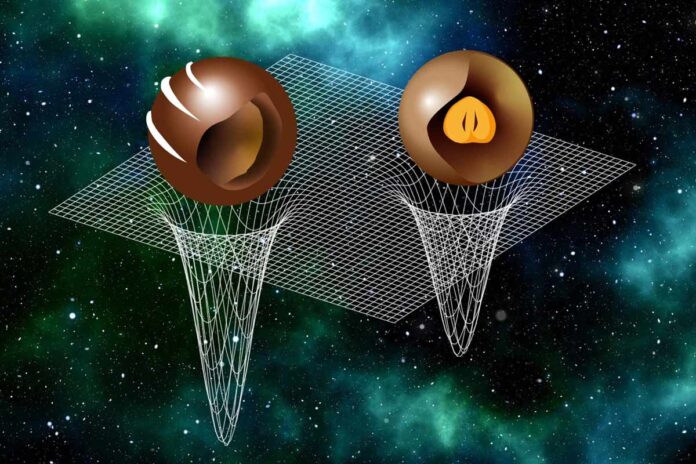Neutron stars are extremely compact objects that can form after a star dies. Their interiors, however, are unknown. Scientists have been attempting to decipher their structure since their discovery.
The most difficult challenge is simulating the extreme conditions inside neutron stars. It can barely be replicated on Earth in a laboratory. So, many models exist in which various attributes. Such as temperature and density are defined using so-called equations of state. From the stellar surface to the inner core, these equations attempt to characterise the structure of neutron stars.
Physicists at Goethe University Frankfurt have now completed another critical piece of the puzzle. They have created over a million equations of state that satisfy the constraints imposed by theoretical nuclear physics data on the one hand and astronomical observations on the other.
When the equations of state were evaluated, physicists discovered something unexpected. “Light” neutron stars (with masses less than about 1.7 solar masses) appear to have a soft mantle and a stiff core. Whereas “heavy” neutron stars (with masses greater than 1.7 solar masses) appear to have a stiff mantle and a soft core.
“This result is very interesting because it gives us a direct measure of how compressible the centre of neutron stars can be.” This is said by Prof. Luciano Rezzolla. Neutron stars behave similarly to chocolate pralines. Light stars resemble chocolates with a hazelnut centre surrounded by soft chocolate. Whereas heavy stars resemble chocolates with a hard layer containing a soft filling.”
The speed of sound is critical to this understanding. This quantitative metric is based on the stiffness or flexibility of the matter. It describes the rate at which sound waves move inside an item. Oil deposits are discovered on Earth, and the planet’s interior is explored at the speed of sound.
By modelling the equations of state, the scientists could also identify previously unknown properties of neutron stars. Regardless of their mass, they most likely have a radius of only 12 kilometres. They are the same diameter as Frankfurt.
“Our extensive numerical study allows us to make predictions for the radii and maximum masses of neutron stars. It also allows us to set new limits on their deformability in binary systems. That is, how strongly they distort each other through their gravitational fields,” author Dr. Christian Ecker explains. “These discoveries will be especially useful in determining the unknown equation of state using future astronomical observations and gravitational wave detections from merging stars.”

